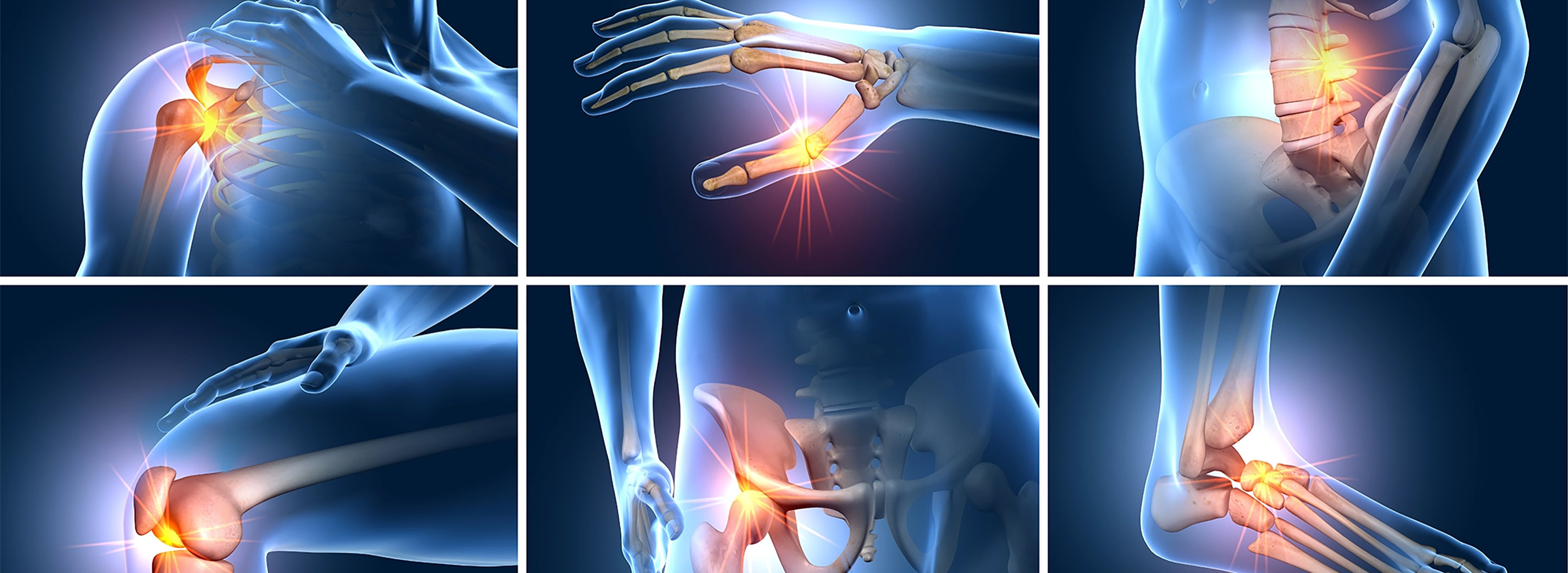5% OFF BY SUSCRIBING TO OUR NEWSLETTER
Take care of your joints

Dr. Stéphane De Jésus

Joints are essential to the body's mobility and function.
However, they are also subject to wear and tear and injury, which can lead to pain and loss of mobility. So it’s important to look after your joints with regular physical activity and a healthy, balanced diet.
Do you really know your joints?
A joint is a junction between several body parts, enabling movement. The knee joint consists of the ends of the femur and tibia, both covered with cartilage (80% water by volume, acting as a “hydrostatic cushion”). Between the femur and tibia are two menisci, which also serve to absorb shock and increase joint mobility. The joint is surrounded by a capsule that holds the synovial fluid. Produced by the synovial membrane, this fluid lubricates the joint and ensures adequate cartilage nutrition. Ligaments, muscles and tendons stabilize the whole.
All these elements work in synergy to ensure joint mobility, stability and protection.
Did you know?
The human body contains over 360 joints. The largest and most complex joint in the human body is the hip, which enables a wide range of movements.
What illnesses or injuries can affect joints?

Joints can be affected by various pathologies and injuries, such as :
- ARTHROSIS is an inflammation of the joints that can cause pain, stiffness and loss of mobility. It affects around 350 million people worldwide. Women are more likely than men to suffer from osteoarthritis.
- TENDINOPATHY is a micro-degenerative pathology of the tissues around tendons and/or the sheaths containing them, which can cause pain and loss of mobility. Tendinopathy is often caused by overuse or injury.
- ENTORSE is a ligament injury that can cause pain, swelling (effusions) and loss of mobility.
- Ligaments are the fibrous tissues that bind bones together at joints. They can withstand considerable forces, but are also prone to injury. The CROSSED LIGAMENTS OF THE KNEE, for example, are ligaments commonly damaged or ruptured in sportsmen and women.
- FRACTURES , which are bone injuries, BURSITES (inflammation of the bursae – the small sacs filled with synovial fluid), or MISSILE DISCREASES, often caused by trauma.
It’s important to consult a healthcare professional if you experience joint pain, stiffness or loss of mobility, so that the problem can be diagnosed and treated as quickly as possible.
Regular, progressive physical activity can help maintain joint health by improving muscle strength and reducing pressure on joints.
How can you protect your joints?
Here is a non-exhaustive list of tips for preserving your joints over time:
- Maintain regular, progressive physical activity: exercise can help maintain muscle strength and joint flexibility, while helping to maintain a healthy weight.
- Avoid repetitive movements: if your work or activities involve repetitive movements, try to take regular breaks to avoid overloading your joints, and modify your sports or work gestures.
- Do CARs (Controlled Articular Rotations): CAR movements are active, slow, controlled rotational movements at the outer limits of movement to teach joint adaptation.
- Pay attention to your posture: good posture can help reduce pressure on joints, especially those in the back and hips.
- Avoid shocks: avoid falls and knocks to the joints to avoid injury.
- Maintain a healthy weight: excess weight can put extra pressure on joints, especially those in the knees and hips.
- Pay attention to your diet and hydration: a healthy, balanced diet can help prevent chronic inflammatory diseases such as arthritis.
- Avoid smoking: smoking can increase the risk of chronic inflammatory diseases such as arthritis, and reduce the blood circulation needed to nourish joints.
- Take a course of Synergy6 for a significant improvement in the well-being of your joints
By following these tips, you can help preserve the health of your joints and prevent injuries or illnesses that can affect them.
Muscle power is nothing if movement is no longer possible, if tendons are injured and/or tissues are inflamed.


